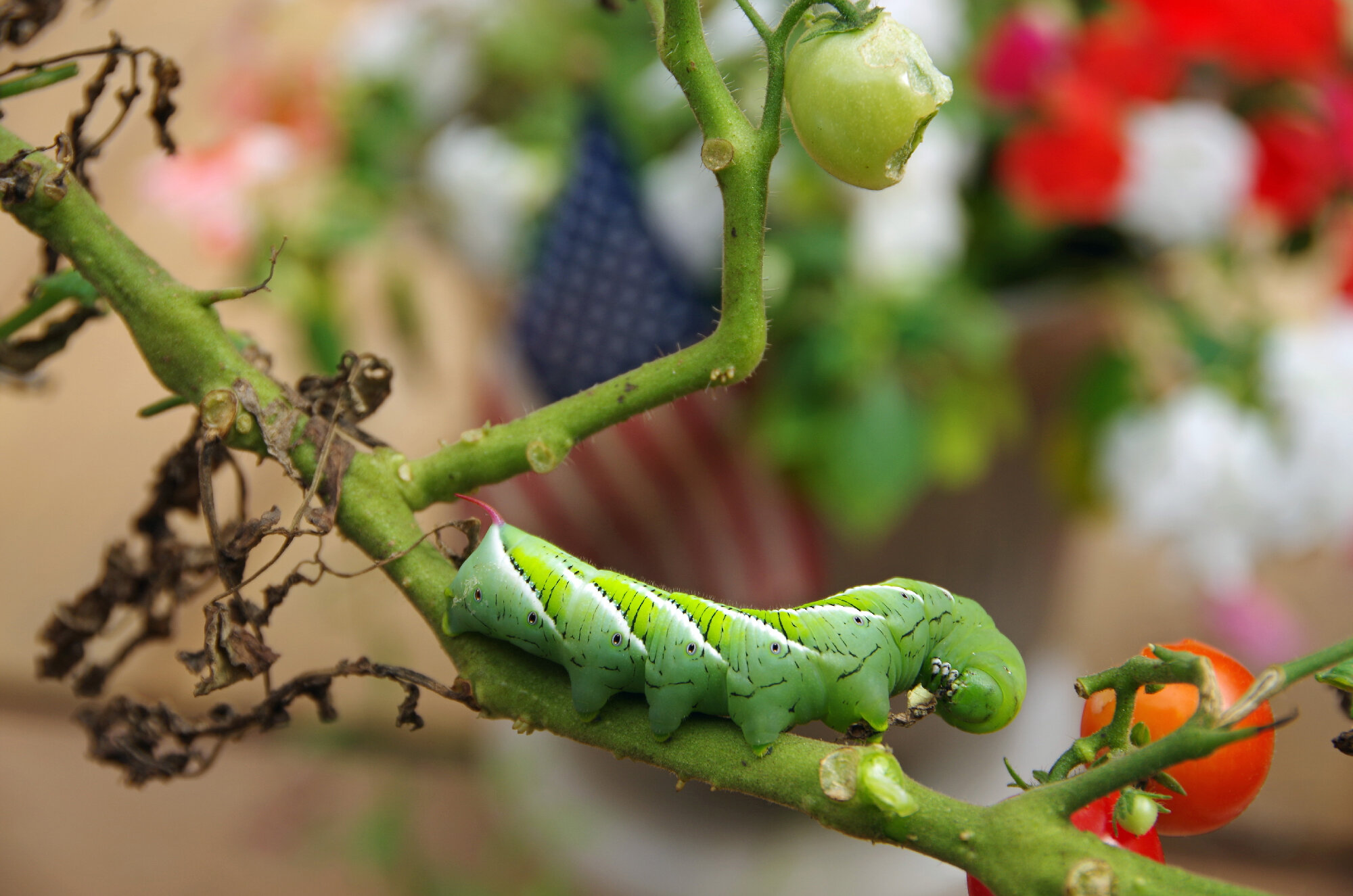How to get rid of Unwanted Plant Pests, Naturally.
Spring and summer bring sunshine, but the warmth also seems to attract many unwanted pests. Whether gnats have taken up residence in your houseplants or slugs are chewing on the leaves in your vegetable garden, those things have to go! We don’t want all of your hard work to go to waste due to a few nasty pests. Luckily, there are a lot of easy, natural, and safe ways to get rid of the pests, and we have a list to help you out.
Fungal Gnats
You might have some gnats flying around your houseplants, and no one wants to deal with the annoyance of bugs in their living space. These gnats like to lay their larvae in warm moist soil, and if they’re already flying around, that means their eggs are already embedded. One way to prevent gnats is to pour a layer of sand over the top of your soil. This will prevent the gnats from reaching your soil where they would typically lay their eggs. It also gives your houseplants a clean finished look!
If the sand doesn’t match your aesthetic, no worries, we have another tip for you: try making a solution with neem oil and water to spray on your plants or sprinkle cinnamon on the top of your soil.
Aphids
Aphids are the most common garden pests, and they’re likely already crawling around your vegetables. There are a few ways to prevent these annoying critters, here are some of our favorites.
Ladybugs! That’s right, bring more bugs into your garden to get rid of your other bugs. Ladybugs are harmless to you and your plants, in fact, they eat aphids. You can buy ladybugs at many nurseries.
Companion planting is also a neat trick, where plants can work together to help each other grow. Smelly plants tend to scare off aphids, so try planting one of these plants near your aphid-affected plants: peppermint, garlic, or chives.
You can also make a spray solution. Neem oil diluted with water or a simple dish soap and water mix should help get rid of the bugs.
Slugs
Slugs are hard to catch in action, as they are more likely to come out in the coolness of night. If you notice shiny trails or chomped leaves, try adding coffee grounds or broken egg shells to your soil. Coffee grounds will ward off the slugs, and eggshells will make the terrain too treacherous for slugs to wiggle over. In addition, these leftover kitchen scraps are both super healthy for your soil and will provide an extra dose of good nutrients to your plants.
You can also make a trap. Dig a hole in your garden bed and place a plastic cup into it, so just the mouth is open. Fill it with something that will attract the slugs, like beer-- which is known as a slug’s drink of choice. In the morning, discard the drowned slugs.
Squash Bugs
Squash bugs will move in on your squash plants and destroy your garden fast. They will lay their eggs on the underside of the leaves, so if you have squashes in your garden, make sure to periodically check your leaves to catch them fast. Nasturtium are great companion plants for squashes, and they’ll ward off those pesky bugs.
Hornworms
As soon as you begin seeing hornworms on your tomato plants, pick them off quickly. Those green worms can do major damage to your tomato plants, and fast. If there aren’t too many, try picking them off with your hands. Otherwise, a soapy water spray might do the trick to help them slide off of the leaves.
Caterpillars
An easy way to help get rid of caterpillars is to invite birds into your garden for a snack. Post a bird feeder near your garden to attract birds. Your new visitors will happily munch on the caterpillars living in your garden. You can also try both the soapy water and neem oil tactic to rid your garden of caterpillars. If you’re feeling ambitious, rehome the caterpillars and wait for a beautiful kaleidoscope of butterflies. It also makes for a fun gardening chore for the kids!
Many of these tips and tricks will work for a variety of different garden pests. So start with whatever ingredient you have on hand! And let us know if you have success. We hope to see your #grownwithGROW plants nice and strong!






